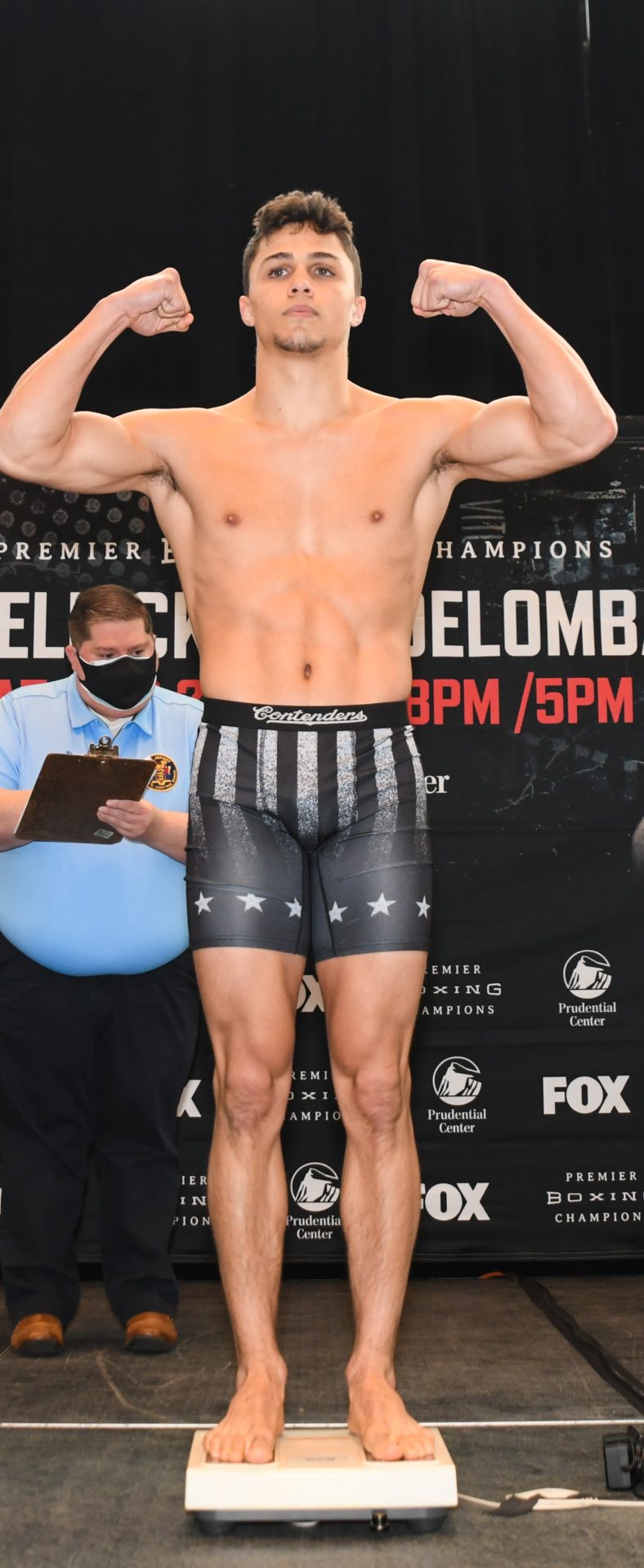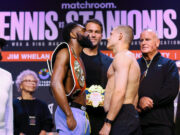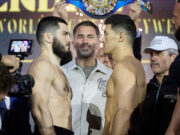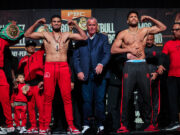
HOUSTON – And there was Sergio Martinez lurking stage left, both taller and thinner than he appears on television. He was at the postfight press conference on the second floor of Reliant Center to supervise, not make trouble. Martinez’s class prohibited him from upstaging Julio Cesar Chavez Jr., calling him out or demanding his garish WBC belt back.
Martinez did not have an entourage, certainly no one stunning as the phalanx of tight-dressed chicas that followed Chavez in the converted media center. What Martinez did have, though, was presence and a star’s piercing confidence. “I would knock him out,” Martinez said quietly in his native Spanish, when asked what would happen in a match with Chavez. “Yes, he’s improved, I see a little difference in his speed, but I would knock him out, don’t you think?”
So it tends to go for Julio Cesar Chavez Jr. Even after a fight Chavez’s promoter called “the best performance by Julio that I’ve seen,” Chavez struggled for respect when his turn at the microphone came. Two seats to the left was his father, Mexico prizefighting’s greatest living practitioner. Twenty feet from Dad was the world’s middleweight champion. About all Chavez could muster in the moment was a “¡soy muy contento!” he repeated so often even his sycophantic advisor Fernando Beltran teased him.
Chavez is not ready for Martinez – the one thing everyone agreed on after Chavez’s fantastic stoppage of Rhode Islander Peter Manfredo Jr. at 1:52 of round 5, Saturday – but he’s a hell of a lot closer to being ready for elite middleweights than anyone predicted he might be eight, or even three, years ago.
After fewer than 15 minutes in a ring with Chavez, Manfredo, who announced his retirement after Saturday’s match, sounded a whole lot like John Duddy 17 months ago in a postfight press conference at Alamodome, exactly 200 miles west of here.
“You never got me down, Ray!” Manfredo said in a passable homage to Robert De Niro’s Jake LaMotta in “Raging Bull.” Then he said, “I’m happy for (Chavez), proud of him. And you should be proud of him, too.”
Everything about Chavez was better than the last time he fought. Everything about Chavez was better, then, than the time before that. And the time before that marked Chavez’s first camp with trainer Freddie Roach. If Roach’s ever-improving-Pacquiao narrative suffered some exposure by Juan Manuel Marquez two Saturdays ago, his ever-improving-Chavez narrative held up just fine in East Texas.
Chavez now has a man’s body. Nowhere was this clearer than on the Reliant Arena media credential, a laminated green card that featured a goofy-bearded Chavez wearing the small shoulders and bird’s breast of an adolescent. Saturday’s version, conversely, was clean-shaven and muscular.
Chavez throws his jab with greater meaning and effect now than he did in 2009. His right guard flies off his cheek, yes, but that just opens him to counter crosses. And what follows each time Chavez gets tagged by a right hand makes excellent theater.
Chavez is more introspective than you think. He knows you have snickered about him for eight years. He senses that American writers have glanced at his resume and joked about the war he made on the Big Ten.
He has taken all this in what sporting good spirit the world’s privileged class shows the rest of us. In public, Chavez is self-deprecating and respectful.
And then you hit him. He takes that sort of thing far more personally than an average prizefighter. It verily pisses him off, and he goes after you with a special fury members of his class reserve for aspiring usurpers. These days, too, Chavez’s right hand is wicked enough to put down an uprising.
That right hand, and the wholly improved footwork that sets it up, represent layers Chavez has added to his self-portrait. And great portraits are all about layers.
Nowhere is that clearer in this ever-muggy city than at The Museum of Fine Arts, Houston – a couple miles northeast of Reliant Arena, beside the campus of Rice University. Through February, MFAH is running a Dutch and Flemish Masterworks exhibition that features, among other acts of genius, Rembrandt’s “Portrait of Aechje Claesdr” – a well-preserved work that first showed 17th century connoisseurs young Rembrandt Van Rijn’s singular talent.
The Flemish Master approach to painting that Rembrandt learned, perfected and improved relies on the use of seven layers. Each layer – from ink cartooning to umber underlayer to finishing palette – is applied to enhance what follows. The miracle of this approach – for if miracles exist, a miracle it surely is – comes in time’s thinning effect on oil paint. Over centuries, the oils used by the Flemish Masters have lost some of their body, allowing each painting’s underlayers to shine through. Rembrandt’s paintings, then, glow with colors more brilliantly now than when he applied them almost 500 years ago. Go ahead and think of anything we’re doing today about which that will be said in the year 2650.
One imagines Sergio Martinez would be fascinated by this approach more readily than Chavez. Martinez is closer to a master prizefighter, and more cerebral. His brilliance of motion and physical self-awareness, too, dwarf Chavez’s.
But Chavez’s apprenticeship in this brutal game has been striking. As his trainer hastens to note, Chavez understands the shape and nature of a boxing ring better than his resume predicts. Chavez has neither his father’s nor Martinez’s economy of motion, but he has confidence complemented by a willingness to engage those who offend him.
“This game has taught me how to be a strong-minded individual,” said a retiring Peter Manfredo, after Chavez stopped him Saturday. “But my kids won’t even look at (boxing). I won’t even order the pay-per-view for them.”
Chavez’s dad chose differently. Boxing continues to be entertained by that choice.
Bart Barry can be reached at bart.barrys.email (at) gmail.com

























